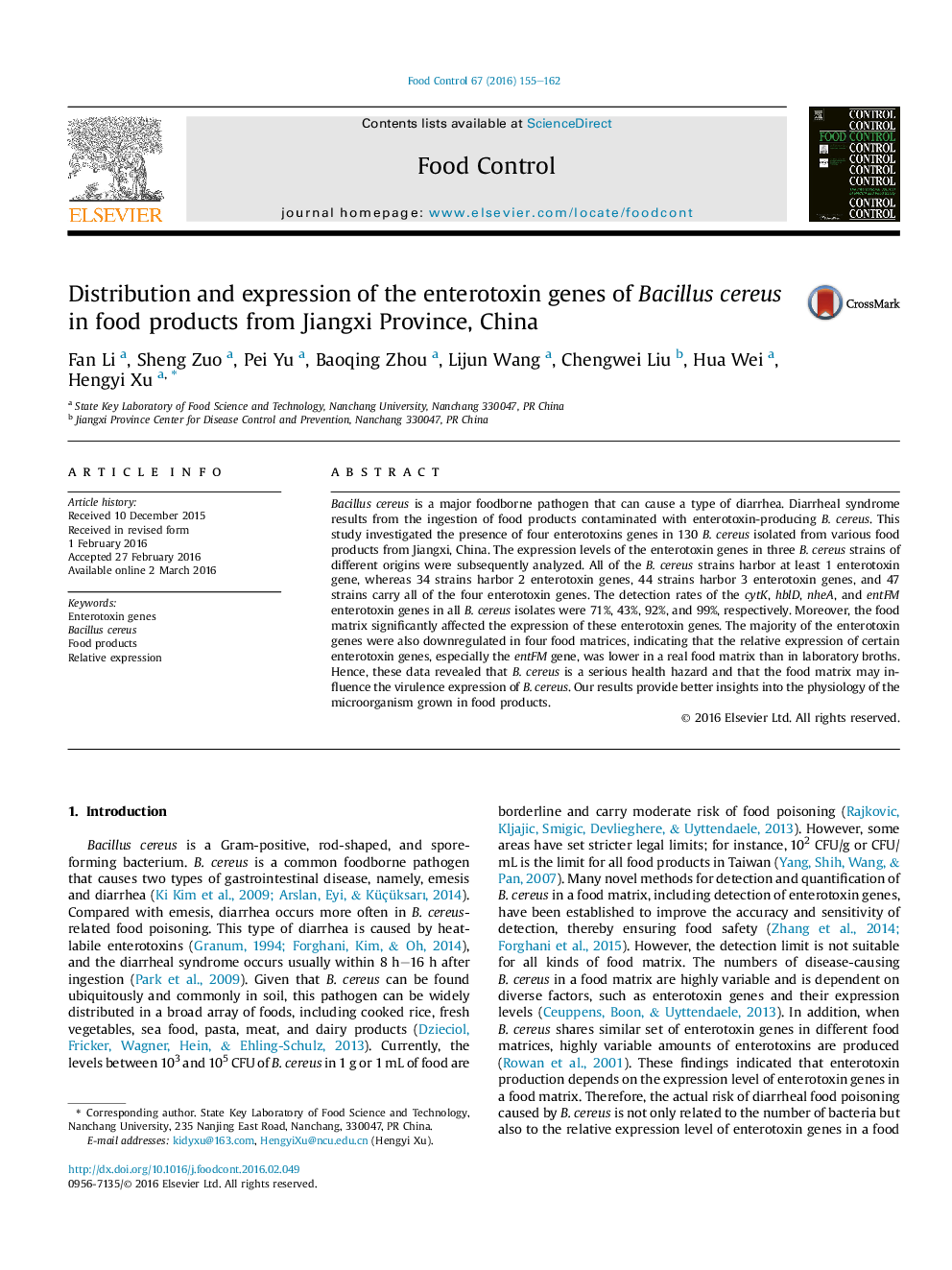| Article ID | Journal | Published Year | Pages | File Type |
|---|---|---|---|---|
| 6390114 | Food Control | 2016 | 8 Pages |
â¢The nheA and entFM were the most prevalent enterotoxin genes in studied B. cereus strains.â¢Different B. cereus strains in the same medium displayed similar growth rate.â¢Food matrix exerts significant effect on the gene expression.â¢The expression of certain enterotoxin genes were downregulated in food matrices.
Bacillus cereus is a major foodborne pathogen that can cause a type of diarrhea. Diarrheal syndrome results from the ingestion of food products contaminated with enterotoxin-producing B. cereus. This study investigated the presence of four enterotoxins genes in 130 B. cereus isolated from various food products from Jiangxi, China. The expression levels of the enterotoxin genes in three B. cereus strains of different origins were subsequently analyzed. All of the B. cereus strains harbor at least 1 enterotoxin gene, whereas 34 strains harbor 2 enterotoxin genes, 44 strains harbor 3 enterotoxin genes, and 47 strains carry all of the four enterotoxin genes. The detection rates of the cytK, hblD, nheA, and entFM enterotoxin genes in all B. cereus isolates were 71%, 43%, 92%, and 99%, respectively. Moreover, the food matrix significantly affected the expression of these enterotoxin genes. The majority of the enterotoxin genes were also downregulated in four food matrices, indicating that the relative expression of certain enterotoxin genes, especially the entFM gene, was lower in a real food matrix than in laboratory broths. Hence, these data revealed that B. cereus is a serious health hazard and that the food matrix may influence the virulence expression of B. cereus. Our results provide better insights into the physiology of the microorganism grown in food products.
